

4 Oil and Gas
Tax Smart Strategy Masterclasses

Master tax-saving techniques with Daniel Goodwin, expert in 1031 Exchanges, QOZs, and Delaware Statutory Trusts.
These four masterclasses reveal powerful strategies for oil and gas investors, teaching you how to leverage the tax code like America’s most successful real estate investors.
Learn to significantly reduce your tax burden while maximizing investment returns.

Oil and Gas Investing With 1031 Exchanges and Minerals with Passive Income
View Masterclass
Oil and Gas Investing with IRAs for Growth and Income
View Masterclass
Oil and Gas Investing with QOZs for Capital Gains Tax Relief
View Masterclass
Oil and Gas Investing with Drilling and IDC Credits to Shelter All Income and Cap Gains
View Masterclass1031 EXCHANGE MASTERCLASS

Getting Started
What is a 1031 Exchange?
Rules of A 1031 Exchange – Part 1
Rules of A 1031 Exchange – Part 2
Delaware Statutory Trust Strategies
Need clarity on any
subject in these videos?
We are happy to help.
Fill in your personal details below and list your
questions. We will get back to you as soon as possible.
"*" indicates required fields
Need clarity on any
subject in these videos?
We are happy to help.
Fill in your personal details below and list your
questions. We will get back to you as soon as possible.
"*" indicates required fields
COMING SOON
QOZ Masterclass

Qualified Opportunity Zones
1031 Exchange vs. Opportunity Zone
Due Diligence & How to Vet Your Investment Opportunities
Tax-Smart Strategies and Information
Need clarity on any
subject in these videos?
We are happy to help.
Fill in your personal details below and list your
questions. We will get back to you as soon as possible.
"*" indicates required fields
Need clarity on any
subject in these videos?
We are happy to help.
Fill in your personal details below and list your
questions. We will get back to you as soon as possible.
"*" indicates required fields
COMING SOON
What is a Tax Deferred Exchange?
A tax-deferred exchange represents a simple, strategic method for selling one qualifying property and the subsequent acquisition of another qualifying property within a specific time frame. Although the logistics of selling one property and buying another are virtually identical to any standard sale and purchase scenario, an exchange is different because the entire transaction is memorialized as an exchange and not a sale. And it is this distinction between exchanging and not simply selling and buying, which ultimately allows the taxpayer to qualify for deferred gain treatment. So essentially, sales are taxable and exchanges are not. Internal Revenue Code, Section 1031.
Because exchanging represents an IRS recognized approach to the deferral of capital gain taxes, it is important for us to appreciate the components and intent underlying such a tax deferred or tax free transaction. It is within Section 1031 of the Internal Revenue Code that we find the core essentials necessary for a successful exchange. Additionally, it is within the Like-Kind Exchange Regulations, previously issued by The Department of the Treasury, that we find the specific interpretation of the IRS and the generally accepted standards and rules for completing a qualifying transaction.
What are the Benefits of a 1031 Exchange?
A property owner or investor who expects to acquire replacement property subsequent to the sale of his existing property should consider an exchange. To do otherwise would necessitate the payment of capital gain taxes in amounts which can exceed 20%-30%, depending on the appropriate combined federal and state tax rates. In other words, when purchasing replacement property without the benefit of an exchange, your buying power is dramatically reduced and represents only 70%-80% of what it did previously.
Do all exchanges involve the swapping or trading with other property owners?
No, before delayed exchanges were codified in 1984, all simultaneous exchange transactions required the actual swapping of deeds and simultaneous closing among all parties to an exchange. Oft times these exchanges were comprised of dozens of exchanging parties as well as numerous exchange properties. But today, there is no such requirement to swap your property with someone else in order to complete an exchange. The 1031 exchange rules have been streamlined to the extent that the current process is reflective more of your qualifying intent rather than the logistics of the property closing.
Must all exchanges close at the same time?
No, although there was a time when all exchanges had to be closed on a simultaneous basis, they are rarely completed in this format any longer. In fact, a significant majority of exchanges are now closed as delayed or deferred exchanges.
Does Like-kind mean purchasing the same type of property which was sold?
Although the definition of like-kind has often been misinterpreted to mean that the property being acquired must be utilized in the same form as was the property being exchanged. In other words, apartments for apartments, hotels for hotels, farm for farm, etc. However, the true definition is again reflective more of intent than use. Accordingly, there are currently two types of property, which qualify as like-kind:
- 1. Property held for investment, and, or
- 2. Property held for a productive use in a trade or business.
Are Exchanges limited to one exchange and one replacement property?
This is another exchanging myth. There are no provisions within either the Internal Revenue Code or the Treasury Regulations which restrict the amount of properties which can be involved in an exchange. Therefore, exchanging out of several properties into one replacement property or vice versa, relinquishing (selling) one property and acquiring several are perfectly acceptable strategies.
What are the Basic rules regarding Deferring Capital Gains with an Exchange?
Let us look at a basic concept, which applies to all exchanges. Use this concept to fully defer the capital gain taxes realized from the sale of a relinquished property:
- 1. The purchase price of the replacement property must be equal to or greater than the net sales price of the relinquished property, and
- 2. All equity received from the sale of the relinquished property must be used to acquire the replacement property.
To the extent that either of these rules is abridged, a tax liability will accrue to the Exchanger. If the replacement property purchase price is less, there will be tax. To the extent that not all equity is moved from the relinquished to the replacement property, there will be tax. This is not to say that the exchange will not qualify for these reasons; partial 1031 exchanges do in fact qualify for partial tax deferral. It simply means that the amount of any discrepancy will be taxed as boot, or non like-kind property.
Is my tax based on my equity or my taxable gain?
Tax is calculated upon the taxable gain. Gain and Equity are two separate and distinct items. To determine your gain, identify your original purchase price, deduct any depreciation, which has been previously reported, then add the value of any improvements, which have been made to the property. The resulting figure will reflect your cost or tax basis. Your gain is then calculated by subtracting the cost basis from the net sales price.
How do you compute the basis in the new property?
It is critical that you and your tax representative adjust and track basis correctly to comply with Section 1031 regulations.
Gain is deferred, but not forgiven, in a like-kind exchange. You must calculate and keep track of your basis in the new property you acquired in the exchange.
The basis of property acquired in a Section 1031 exchange is the basis of the property given up with some adjustments. This transfer of basis from the relinquished to the replacement property preserves the deferred gain for later recognition. A collateral affect is that the resulting depreciable basis is generally lower than what would otherwise be available if the replacement property were acquired in a taxable transaction.
Is there a simple rule for structuring an exchange where all the taxable gain can be deferred?
Yes, if you:
- Purchase a replacement property which is equal to or greater in value than the net selling price of your relinquished (exchange) property, and
- Move all equity from one property to the other; the gain will be totally deferred.
How do I identify a 1031 Exchange Property?
A Replacement Property is considered identified before the end of the 1031 Exchange 45-day identification period only if the following requirements are satisfied. However, any Replacement Property you receive before the end of the identification period will in all events be treated as identified before the end of the identification period.
A Replacement Property is identified only if it is designated as Replacement Property in a written document signed by you. This document must be sent before the end of the identification period to a person (other than yourself or a related party) involved in the exchange.
Are reverse 1031 exchanges considered legal?
Yes, although they can sometime become complex and always require appropriate planning. Most of our Qualified Intermediary or facilitator partners are owned by banks. This means that in most cases they will not handle reverse 1031 exchanges because liability reasons prevent them from holding title to property on behalf of an Exchanger. Provident suggests contacting one of our Partners for your reverse 1031 exchange planning and execution. They have demonstrated its unique planning and execution capabilities over a course of several years and they work closely with the most experienced tax attorneys in the country.
What are the time limits to complete a Section 1031 Deferred Like-Kind Exchange?
While a like-kind exchange does not have to be a simultaneous swap of properties, you must meet two time limits or the entire gain will be taxable. These limits cannot be extended for any circumstance or hardship except in the case of presidentially declared disasters.
The first limit is that you have 45 days from the date you sell the relinquished property to identify potential replacement properties. The identification must be in writing, signed by you and delivered to a person involved in the exchange like the seller of the replacement property or the qualified intermediary. However, notice to your attorney, real estate agent, and accountant or similar persons acting as your agent is not sufficient.
Replacement properties must be clearly described in the written identification. In the case of real estate, this means a legal description, street address or distinguishable name. Follow the IRS guidelines for the maximum number and value of properties that can be identified.
The second limit is that the replacement property must be received and the exchange completed no later than 180 days after the sale of the exchanged property or the due date (with extensions) of the income tax return for the tax year in which the relinquished property was sold, whichever is earlier. The replacement property received must be substantially the same as property identified within the 45-day limit described above.
In a delayed exchange, is there any limit to property value when identifying by using the two hundred percent rule?
Yes. Although you may identify any three properties of any value under the three property rule, when using the two hundred percent rule there is a restriction. It is when identifying four or more properties, the total aggregate value of the properties identified must not exceed more than two hundred percent of the value of the relinquished property. An additional exception exists for those whose identification does not qualify under the three property or two hundred percent rules. The ninety-five percent exception allows the identification of any number of properties, provided the total aggregate value of the properties acquired total at least ninety-five percent of the properties identified.
Are there restrictions for deferred and reverse exchanges?
It is important to know that taking control of cash or other proceeds before the exchange is complete may disqualify the entire transaction from like-kind exchange treatment and make ALL gain immediately taxable.
If cash or other proceeds that are not like-kind property are received at the conclusion of the exchange, the transaction will still qualify as a like-kind exchange. Gain may be taxable, but only to the extent of the proceeds that are not like-kind property.
One way to avoid premature receipt of cash or other proceeds is to use a qualified intermediary or other exchange facilitator to hold those proceeds until the exchange is complete.
You cannot act as your own facilitator. In addition, your agent (including your real estate agent or broker, investment banker or broker, accountant, attorney, employee or anyone who has worked for you in those capacities within the previous two years) cannot act as your facilitator.
Be careful in your selection of a qualified intermediary as there have been recent incidents of intermediaries declaring bankruptcy or otherwise being unable to meet their contractual obligations to the taxpayer. These situations have resulted in taxpayers not meeting the strict timelines set for a deferred or reverse 1031 exchange, thereby disqualifying the transaction from Section 1031 deferral of gain. The gain may be taxable in the current year while any losses the taxpayer suffered would be considered under separate code sections.
Should identifications be made to the intermediary or an attorney, escrow, closer or title company?
Identifications may be made to any party listed above. However, many times the escrow holder or closer is not equipped to receive your identification if they have not yet opened a transaction file. Therefore, it is easier and safer to identify through the Qualified intermediary or facilitator provided the identification is postmarked or received within the forty-five-day identification period.
Can the 45- and 180-calendar day tax-deferred exchange deadlines be extended?
No. These deadlines are actually part of the Internal Revenue Code and cannot be extended for any reason except by a Presidential Disaster Declaration. The deadline is not extended if it falls on a Saturday, Sunday or legal holiday.
Hi I’m Daniel Goodwin.
Our masterclasses are great because it’s easy to get started. The topics on 1031 exchange, Delaware Statutory Trusts, and Qualified Opportunity Zones (QOZs) touch on a vast array of soft skill focus areas, which build the knowledge you need and enable you to develop the skills of top real estate investors.
In addition to why I believe it is the best learning experience around the 1031 Exchange and Qualified Opportunity Zones, you will learn soft skills like strategy, negotiation, and effective communication.
We will provide you with access to highly visual bite-sized content that is entertaining and engaging. You can learn at your own pace — or you can pick up where you left off. I will also be sending you some emails to encourage you as you progress through the course.
Finally, a downloadable workbook accompanies each class with lesson recaps and supplemental materials so that you can reflect on key learnings and takeaways.
Each Master The 1031 Exchange graduate will be invited to a Private Facebook community with me to dive deeper into lessons.
If you need to get reinspired, watch the classes again. A little extra practice can go a long way.
I want to thank you for letting me be a part of your journey. I applaud you. So let’s get started, and soon you can be showing off your new skills.









